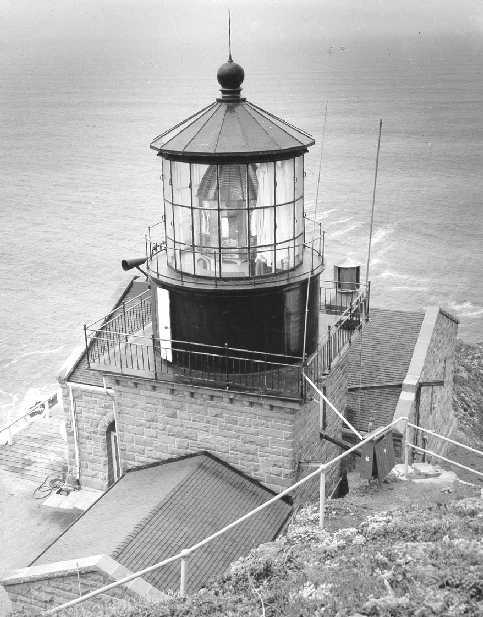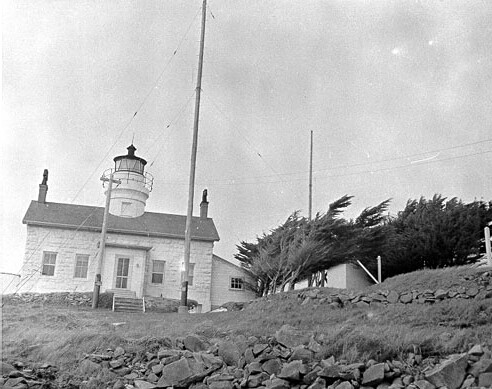Lighthouses are a common fixture in the world of horror, and there are many reasons why. Perhaps it’s the eerie crashing of the waves, or dim light that may or may not bring lost ships to safety. But there’s one aspect that definitely plays a part in the horror of lighthouses – the real-world fear of loneliness. Lighthouse keepers often choose to live in solitude, spending their days alone as they save ships from danger and witness horrific shipwrecks. It’s very common for lighthouse keepers to die alone in their chamber of solitude, and continuously haunt the area for years to come. This is the case with some of the most haunted lighthouses in California, which combine the common fears of the sea, lost spirits, and abandonment for a true horror story. Here are the top haunted lighthouses in California that you need to know….
Point Sur Haunted Lighthouse

Location: Monterey, CA
Nestled on the rocky coastline between Carmel and Big Sur, this lighthouse isn’t just one of the most haunted in California, but the entire country. That being said, you’d never know just by looking at it. It’s perched on a volcanic rock with a gorgeous view of the Pacific Ocean, on a beach that’s more serene than spooky. It’s when you get close enough that you realize it’s haunted by the souls of all those who perished in shipwrecks near the shore. And even the families who lived here in harmony, and simply wish to return as spirits and enjoy the breathtaking ocean views. Many ghosts have been sighted throughout the years, but one of the most famous is a tall man in dark blue, 19th century attire – and you’re guaranteed to hear about him when you take a guided tour of Point Sur State Historic Park.
Battery Point Haunted Lighthouse

Location: Crescent City
Believe it or not, you can actually apply to work as a keeper at Battery Point Lighthouse. You’ll work on a one-month rotation, help upkeep the museum, and keep the ghosts at bay! Okay, maybe not. But there has been some extreme paranormal activity inside this red-bricked building. People have heard footsteps on the tower stairs during storms, slippers have moved in the middle of the night with no explanation, and strange smells of cigars are a common occurrence at the Battery Point Lighthouse, even more than 100 years after it was built. Visit the museum and learn more about the haunted history of this lighthouse!
Point Piños Haunted Lighthouse

Location: Pacific Grove, CA
If you didn’t know any better, you’d think that the Point Piños Lighthouse was just a cute little house… not a haunted institution. Can’t it be both? It’s still in use today as a way to warn ships of upcoming rocks and dangers, and also has museums and exhibits on the grounds. Many apparitions have been seen throughout the years, but one of the most popular spirits is that of Emily Fish, the “socialite lighthouse keeper.” She served as a keeper from 1893 to 1914, and it was quite rare at the time for women to hold such a position. She did a great job upkeeping the grounds and keeping the lighthouse in top shape, and as it turns out… she does the same thing in death. Fish is frequently seen hanging out around the lighthouse and keeping things running!
Alcatraz Island Haunted Lighthouse

Location: San Francisco, CA
There’s a very good chance that you’ve heard of Alcatraz Island in the San Francisco Bay, and the prison that once housed some of the worst criminals in America. It’s hard not to be consumed by evil when you’re surrounded by murderers and thieves – many of whom were killed by other inmates or while trying to escape “The Rock.” Many of these bad vibes can also be felt in the lighthouse, which has been out of service for decades. Take a cruise to Alcatraz and discover why the island, and its lighthouse, are considered to be some of the most haunted places in California.

I am a lifelong pop culture junkie with immense passion for all forms of art and entertainment. On a typical weekend, I can be found at a concert or musical, chasing ghosts on the Haunted Mansion at Disneyland, or watching way too many makeup tutorials on YouTube.
